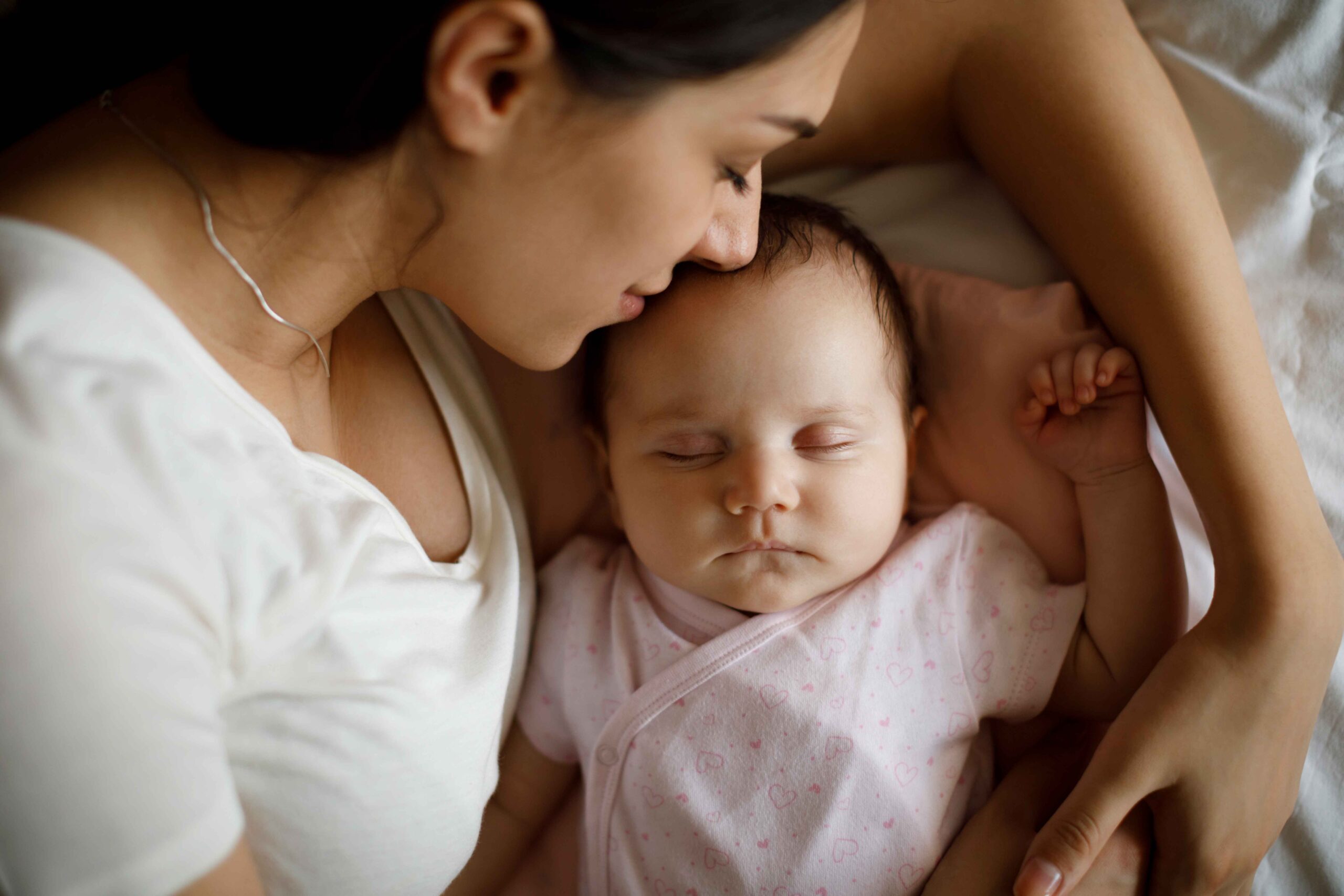Baby Sleep 101: The basics of baby sleep

Baby Sleep 101: The basics of baby sleep It is only after we become parents that we realize what a rocky road baby sleep is and how there is just so much learn and unlearn as we meet our baby’s biological needs while getting some rest ourselves! Let’s talk about some of the basic concepts of baby sleep. Why is sleep important for your child? Whether you have a baby or a toddler, sleep plays an important developmental role. Sleep is as important as food and, yet, somehow it does not receive the same mindful attention from parents. Often, parents are advised to let the child stay up until they drop off to sleep or to skip nap times to have an early bedtime or to reduce nightwakings. This advice usually backfires but is also developmentally potentially harmful. Good sleep is important for physical growth (the growth hormone is secreted during sleep), lower chances of obesity, heart protection, stronger immunity (proteins called cytokines, the building blocks of immunity, are produced during sleep), better attention spans, greater ability to learn and higher brain growth amongst other things. Night sleep and day sleep have different functions so naps play a vital role as well. What is “Sleep Parenting”? A commonly asked question is, “Don’t children just sleep when they are tired?”. The answer is no. The first step to sleep parenting is acknowledging that parents have to support the child to sleep. We help our babies to eat, bathe, play, walk, learn, talk and, yet, somehow we assume that parenting ends when the baby is asleep. This is where many things go wrong as our babies actually continue to need parenting when they sleep. Sleep parenting involves : Observing cues: Babies and toddlers show sleep cues in stages. It is important to observe for early sleep cues (see chart). When intercepted early, it is easier to make the baby/ toddler sleep than when the cues are not understood and the baby/toddler reaches the crying, overtired phase. An overtired child resists sleep and does not sleep well. Feeding or rocking to sleep: It is biologically normal for babies and young toddlers to sleep while nursing/bottle feeding and rocking/walking. These are not “bad sleep habits” or “bad sleep associations”. It is biologically normal for babies to need assistance in this regard and that too with active soothing methods such as these (patting does not work until much later). Children under 3.5 – 4 years cannot be expected to fall asleep on their own. Follow a child-led approach to trying different soothing methods. Holding while asleep: Young babies often wake when put down. They have a biological survival instinct that makes them seek the comfort and security, which comes from physical contact. If your baby is waking up when put down (either immediately or a few minutes later), we need to take the hint and keep holding them This is one vital example of how parenting does not end when the baby is asleep. Babies often need to be held for up to 10-11 months and during regression phases even after. This is biologically normal and not a bad habit. They outgrow the need when they are ready. Further reading on this: Why Does My Baby Wake Up When I Put Her Down? – Bellybelly.com.au When Your Child Will Only Nap On You – Sarah Ockwell-Smith Helping to go back to sleep: If your concern is that your 5 month old or 1 year old doesn’t nap more than 30 minutes at a stretch, the solution is to “bridge the nap”. When your child takes brief naps it doesn’t mean that her/ his nap is complete. It means that the child needs help in going back to sleep through active means of soothing. Bedsharing: Bedsharing is safe and normal and often leads to better sleep for the child and parents. There is much evidence on the benefits of bedsharing as well. For example, see Professor James McKenna’s research: https://neuroanthropology.net/2008/12/21/cosleeping-and-biological-imperatives-why-human-babies-do-not-and-should-not-sleep-alone/ Following baby’s schedule: A baby’s sleep schedule – based on the baby’s cues and natural biological rhythms – is sacrosanct. It works much better if adults adapt to the baby’s schedule rather than the other way round. Creating the right sleep environment: A pitch dark and quiet room for both daytime naps and night sleep (after the age of 3 months in particular) are vital to good sleep. These are biological needs as babies are very easily stimulated and jerked out of sleep. These do not form “bad habits”. What is Overtiredness? A child is overtired when she/he is awake beyond the age appropriate awake window. The child’s body recognizes that sleep isn’t coming and secretes the stress hormones cortisol and adrenaline to cope with it. The child experiences a “second wind”, wherein the child snaps back to wakefulness and becomes hyperactive. Does your baby/ toddler get over active when it is time for bed? Does she/he resist bedtime even though they look tired? Does your child often cry before sleeping? All these are classic examples of overtiredness. An overtired child does not sleep well, which can lead to multiple night wakings, including active nightwakings. Sleep Cues and Awake Windows Every baby is unique but babies of the same age range have similar sleep needs because it is biologically determined, like any developmental milestone. Looking out for sleep cues is important to determine when the child is ready to sleep. Babies and toddlers have early and late sleep cues, and the earlier a caregiver responds to sleep cues and soothes a child to sleep the better because late sleep cues lead to sleep resistance and disturbed sleep – also signs of overtiredness. Please refer to the chart above to understand what cues to look out for. “Awake window” means the time in between two naps or between naps and night sleep when a child can stay awake and interact without getting overtired. The
Decoding 3 pieces of sleep jargon

Decoding 3 pieces of sleep jargon: “active nightwakings”, “overtiredness” and “circadian rhythms” Active nightwakings: What we call “active nightwakings” (or “split nights”) are basically occasions when a baby wakes up at night and is not easily soothed back to sleep and wants to wake fully and play. These are different from the normal wakings that are a few seconds or minutes long, where a baby is easily soothed back to sleep through feeding or rocking or, when they are older, with a cuddle. Active nightwakings can be excruciatingly exhausting for parents and, on most occasions, do indicate an issue in the baby’s sleep that can be easily rectified. The second type of waking is a normal part of baby sleep. In fact, all human beings wake several times every night as all of us actually sleep in “cycles” where we transition from light sleep to deep sleep to REM sleep and then back to light sleep. We all wake in between each and every cycle but, as adults, we are able to roll over or pull up a blanket or fluff a pillow or snuggle our partner and fall back asleep, not even realizing that we are actually awake. Babies wake in quite the same way between sleep cycles but they are unable to fall back asleep on their own and need the help of a caregiver to drift back into a new sleep cycle. This is absolutely biologically normal. For breastfed babies, the easiest way to “bridge” sleep cycles is to simply nurse them. Otherwise babies can be bottle-fed or rocked or walked or, once they are older toddlers, patted or cuddled. The brief, non-active wakings are nothing to worry about and are part and parcel of baby sleep. They reduce organically n as babies grow older and develop the ability to connect sleep cycles on their own. There is absolutely no need for any kind of “sleep training” or development of “self-soothing” as the very idea is unscientific. It is akin to “training” our 6-month-olds to “walk” by repeatedly not picking them up. It makes no sense at their developmental stage. The best that we can do is have an age appropriate sleep routine throughout the day and ensure baby is not overtired and has a conducive sleep environment. These steps can go a long way in reducing wakings. The other type of waking – an “active nightwaking” – is different and can be much more exhausting for both babies and parents. After the age of 4 months, when a baby’s circadian rhythms have formed and baby has some concept of day and night, a baby will not usually wake to play at night. If she does, it means something is going on. One possibility is that the baby does not have an age appropriate sleep schedule – meaning, the right number and length of naps, optimum gaps between naps or a suitably early bedtime. Another is that the sleep environment is not conducive, like it isn’t pitch dark and quiet or the temperature is not comfortable. This can all be rectified with some effort and management on the parents’ part. The parent will need to learn about what routine is best for the baby’s current age and then help the baby into that routine by being sensitive to baby’s cues. It is also possible that baby is going through a specific phase like a “nap transition” (shifting from a higher number of naps to a lower number of naps per day) or a “sleep regression” (a temporary disturbance in sleep due to immense cognitive and physical development). In this case, not much can be done and we need to ride it out. It will pass in a few days or a couple of weeks. So, how exactly should we tackle an active nightwaking while it’s happening at night? When baby wakes up, continue to keep it dark. You can soothe baby with your voice and shush baby as you try to make her sleep again by feeding or rocking. If baby does not fall back asleep in about 20 minutes, you may need to throw in the towel and let baby play for a certain amount of time before once again soothing the baby back to sleep. Continuing to soothe an awake baby for over an hour can be extremely frustrating, to no avail. The next morning, though, it’s important to analyse what the reason for the active nightwaking could be in order to figure out how to deal with it. Overtiredness: When we stay awake past our optimum awake window, we are overtired. Think about a day when you’ve felt very tired around 10 pm, sat down to finish some work and then hit the sack around midnight, only to find that you’re feeling wired and awake now, tossing and turning, unable to fall asleep. When our bodies feel tired, they release a stress hormone called “cortisol” to wake us up. Babies are very sensitive to cortisol production. They have certain “awake windows” – spans of time that they can be awake at a certain age – before they need to sleep again, or risk cortisol production. These awake windows are determined by our “homeostatic rhythms”, which create sleep pressure and tell us when to fall asleep (something our “circadian rhythms” do as well, though only at night). Overtiredness is actually the bane of baby sleep. It is extremely important to help our babies fall asleep when we observe early sleep cues. If we miss these cues, our babies’ bodies will fill with the stress hormone, cortisol, and they will suddenly seem awake again – a second rush of energy that is called the “second wind” and that misleads us into thinking our babies are not ready to sleep. Soon, our babies and toddlers will become hyperactive and, eventually, cranky. If we wait till our babies are cranky to recognize that they need to sleep, we will find them to be fussy at the breast
